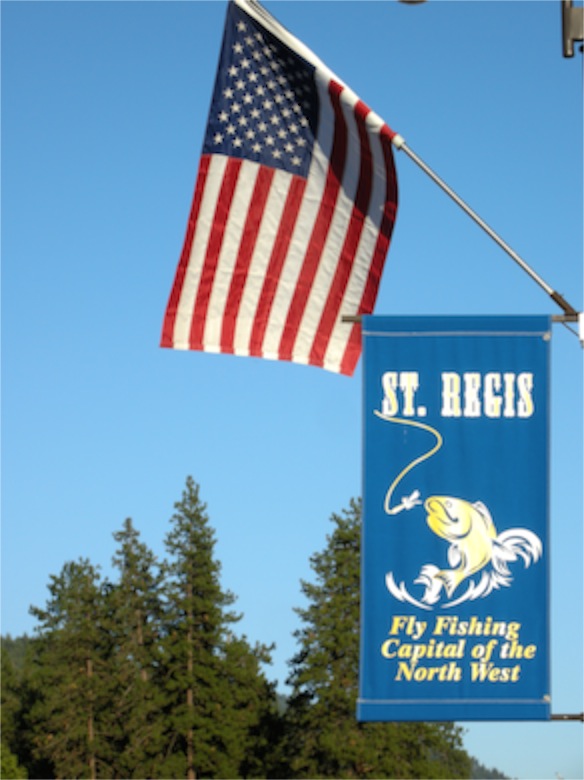Western Montana
10/07/13 04:54

Then, as we drove along, after we were west of Missoula, but not yet to Frenchtown we saw the “Lord of the Valley Lutheran Church.” I wondered if the Lutherans over there in the Clarks Fork valley knew that Jesus is Lord in the Blackfoot valley. I got to thinking about how it might go for the good folks at Lord of the Valley Lutheran Church when it came time for them to interview a candidate for a minister. I imagined a conversation something like the following.
“We’re sorry, pastor, we can’t afford much of a salary. And you’ll have to work long hours with little help. But our church is located in beautiful country, and we have another special thing to offer the minister of the church.”
“What might that be?”
“You get to be Lord of the Valley.”
“Interesting. Doe that mean that I get to decide who can and who cannot hunt in the forests of the valley?”
“Well, no.”
“Does it man that I get to decide who can marry the young maidens of the valley?”
“Um. . . no.”
“Can I levy taxes? Eat the first produce from the gardens? Hunt out of season?”
“Well, no, no and no.”
“Then what do I get for being Lord of the Valley?”
“Um . . . nothing. It is just a title.”
“I see . . . I think I’ll go over and see what they have to offer me at the Garrison Lutheran Church. I hear that Jesus is Lord in their valley.”
And then we got to Superior, Montana. It doesn’t say on their sign what they are superior to. It isn’t elevation. The town is at less than 3,000 feet above sea level. His is a land of high mountains, but the Clarks Fork, which passes right through downtown Superior, has cut a deep valley as it heads west toward Lake Pend Oreille in Idaho. Pend Oreille is French for earring, and earrings are made from Gold, which is really what is Superior about the town of Superior. The Superior Gold strike was one of the largest gold discoveries in the region in the 1860’s and 1870’s. I suppose that it wouldn’t be hard to learn the history of the region, since nearly every town around here has the word “historic” somewhere on the signs that advertise the community.
It started around Butte. As we traveled west we were invited to explore “historic Anaconda,” “historic Warm Springs,” and “historic Deer Lodge.” All of the small towns also proclaimed that they were historic. There are “historic Phillipsburg,” “historic Drummond,” and a host of other historic towns. I suppose that there is a long history of human habitation in this part of the world. The land is gentle, though winters can be harsh. There is plenty of shelter and the forests are rich with game. The territory is a haven for contemporary survivalists in part because they can harvest abundant amounts of firewood for fuel and game for food without having to travel very far. It must seem strange, however, to visitors from Europe, which is filled with buildings that date back hundreds and hundreds of years, to come to a place where “historic” is a claim that tells about what happened in the second half of the nineteenth century. In almost every one of these historic towns, the history to which they refer is less than 150 years.
So we have arrived in St. Regis. The banners on the street claim that this is the fly fishing capital of the northwest. I’m not sure how they choose the various capitals around here. I suppose that Superior might have become the county seat of Mineral County in part because of its name. The fly-fishing is good in this part of the country and the Clarks Fork is a fine place to catch a fish. But that would also be true of the Bitterroot, the Blackfoot, the Madison, the Gallatin, and a host of other rivers and streams. The fishing on the Clarks Fork is spectacular upstream from St. Regis as well. Folks in Superior might even claim that it is superior in their town. But with a name like St. Regis, you have to claim to be the best at something. After all, “Regis” means “kingly.” The French use the old Latin term to refer to Jesus, who is “regis” over several valleys in the French alps, as well as many other places.
I suspect that the town St. Regis got its name from John Francis Regis, who was named a saint by Pope Clement XI in 1715. He never visited the United States, which weren’t “united” at the time of his life, but he was a very popular saint among the Jesuits, who came to this country in the late 19th century at the request of the local native communities. When they encountered French fur trappers and others from Europe they became curious about the religion and medicine of these foreigners and requested that the “black shirts” come to them. “Black shirt” was their description of Roman Catholic clergy. Members of the Jesuit order responded and part of their legacy in this part of the country is that there are a lot of place names that were given by the Jesuits. St. Regis is one of them.
It seems a bit out of place to have the patron saint of lace makers lending his name to a rough and tumble cowboy town in Western Montana, but there are plenty of things around here that are even stranger. There are obviously more stories to be told in this “historic” community. Some of them, however, will have to be told in places other than this morning’s blog.